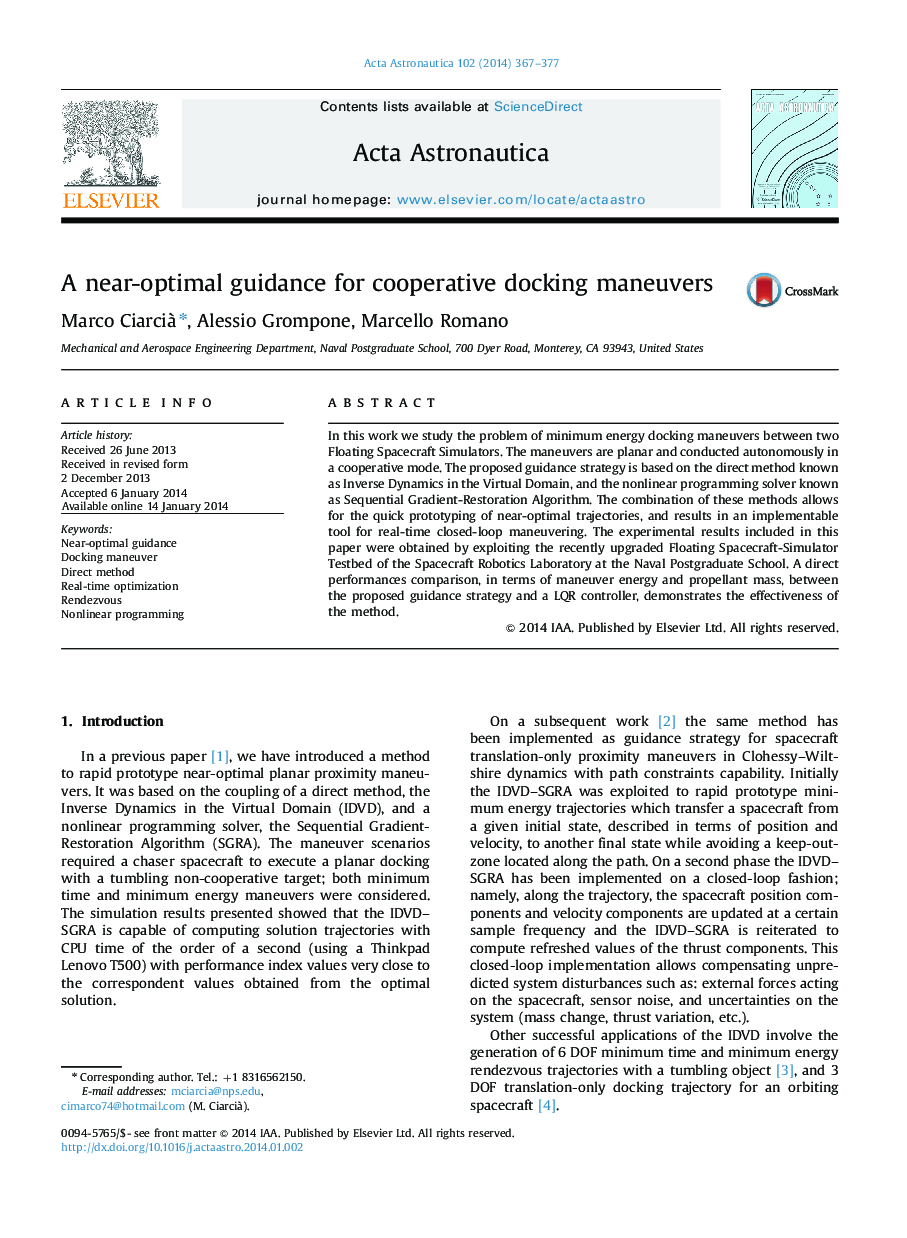| Article ID | Journal | Published Year | Pages | File Type |
|---|---|---|---|---|
| 1714615 | Acta Astronautica | 2014 | 11 Pages |
•We consider minimum energy docking maneuvers between two Spacecraft Simulators.•Such maneuvers are planar and executed autonomously in a cooperative mode.•The proposed guidance combines a direct method and a nonlinear programing solver.•Experimental results were obtained at the Spacecraft Robotics Laboratory.•The proposed guidance proved to be more fuel-efficient than an LQR controller.
In this work we study the problem of minimum energy docking maneuvers between two Floating Spacecraft Simulators. The maneuvers are planar and conducted autonomously in a cooperative mode. The proposed guidance strategy is based on the direct method known as Inverse Dynamics in the Virtual Domain, and the nonlinear programming solver known as Sequential Gradient-Restoration Algorithm. The combination of these methods allows for the quick prototyping of near-optimal trajectories, and results in an implementable tool for real-time closed-loop maneuvering. The experimental results included in this paper were obtained by exploiting the recently upgraded Floating Spacecraft-Simulator Testbed of the Spacecraft Robotics Laboratory at the Naval Postgraduate School. A direct performances comparison, in terms of maneuver energy and propellant mass, between the proposed guidance strategy and a LQR controller, demonstrates the effectiveness of the method.
